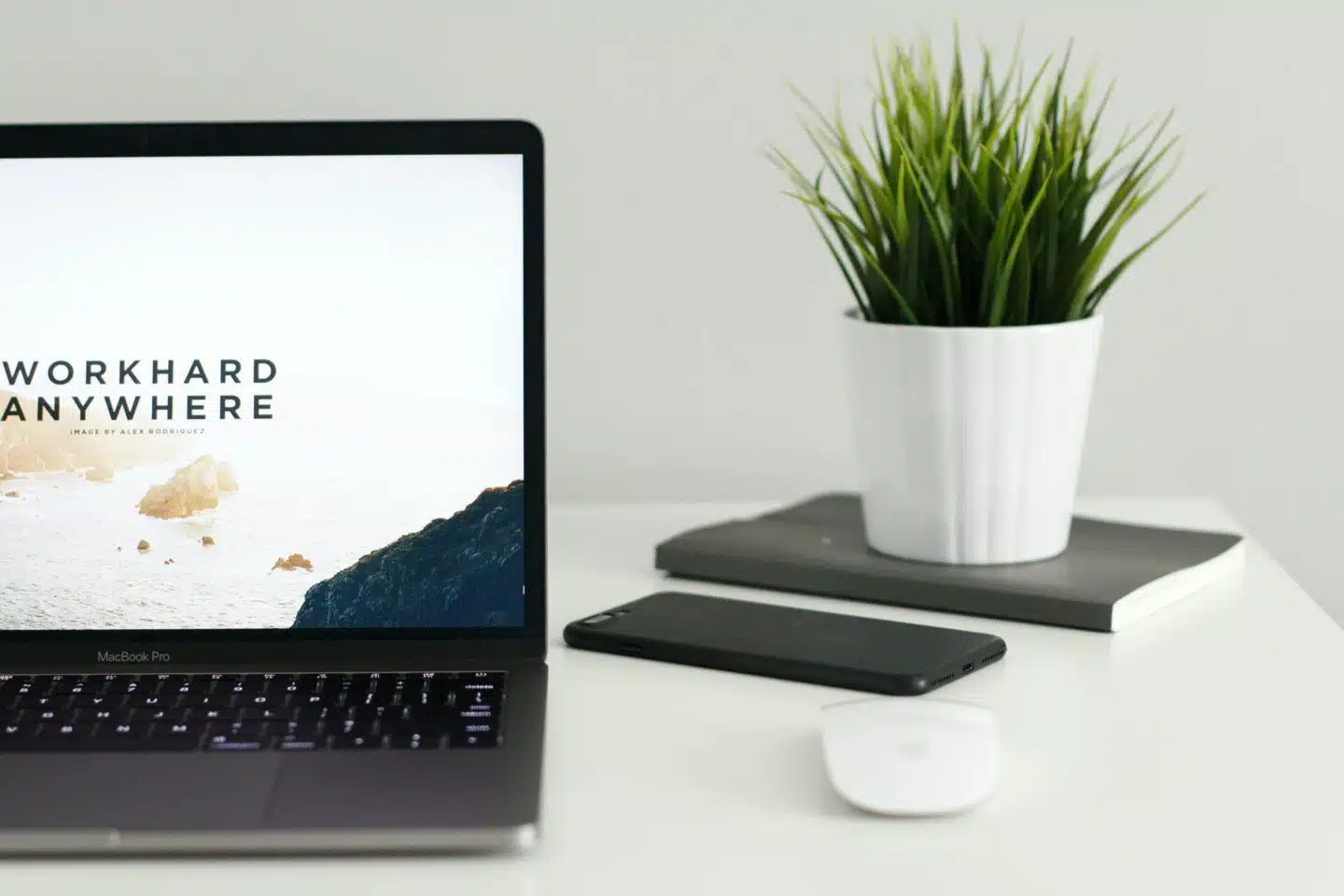
Listen to the episode:
You can also listen on: Apple Podcasts | Spotify | Google Podcasts
#19: In this episode, I’m talking about all things time management tips and tricks! People always ask me how I manage my time as an entrepreneur, so I’m sharing the exact systems I use to unlock peak productivity. I get into:
– The life-changing magic of my new boundaries around emails
– How to use minute-by-minute journaling to give yourself hours back in your week
– How I use time batching to save myself hours of unnecessary work
– The Ivy Lee method: What it is, how to do it, and how I use a modified version of it to get EVERYTHING on my to-do list done
– How I use calendaring/time blocking to manage my time
Snap a screenshot of the podcast and tag me @wtfab sharing your thoughts on this episode, so I can reshare it on my Stories too! Make sure you subscribe to the podcast to stay up to date on the latest episodes and interviews. Lastly, please rate and review to support this podcast!
Pssst! To make your to-do list more fun, I created a cute Ivy Lee-style to-do list template for you that you can print out or use digitally! I also included a daily planner in case you’d rather do your time blocking with pen + paper instead of digitally.

Show notes for Episode #19: My Best Time Management Tips & Tricks
Ok, so depending on who you are, this may or may not be the sexiest episode topic for you.
Personally, I’m always trying to get people’s best tips and tricks for time management. I’m an efficiency freak so I LOVE hearing people’s time management tips and it really gets me going, lol.
I’ve tried a lot of different time management and productivity hacks over the years, and I’ve refined these systems and methods especially over the last couple of years working for myself. And this is where I’ve really seen success with my time management.
Here are my recommendations for time management hacks and tips!
Minute-by-Minute Journal
First, we need to take stock of where you’re spending your time. Keep a minute-by-minute journal over the course of two weeks, up to even a month. Write EVERYTHING down, and log your tasks minute-by-minute.
Be honest. This is purely fact-based, not judgmental. If you scrolled Instagram from 9:01 am – 9:36 am, log it.
This exercise is truly enlightening. After you’ve kept your minute-by-minute journal, go through it with a fine-toothed comb and identify
- Things that are a waste of time that you can completely get rid of.
- Tasks that are taking you too long that you can trim, usually by time-batching.
- Tasks that you can offload to someone else.
When you look through your minute-by-minute journal, what do you notice?
For me, I noticed that I got sucked into an Instagram rabbit hole whenever I went to post on Insta. Posting on social is part of my job, so it’s unavoidable.
But understanding that opening the app to post something for my business/brand is a trigger that can lead to me scrolling on Insta for 20 minutes was key.
Now, instead of allowing myself to get sucked in and mindlessly scroll, I’m able to have awareness around this and to remind myself, I’m just here to post this sponsored campaign, and then I’ll put my phone away.
By eliminating the 20 – 40 minutes per day I was spending scrolling on Insta, I freed up a couple of HOURS each week.

Email Boundaries
The second thing I noticed was that I was spending a ridiculous amount of time on emails. At least half of my day (sometimes even more) was spent responding to emails, and it left me feeling like I never got anything done.
When I first started working for myself, I felt like I HAD to get through my emails first thing in the morning. I had told myself this lie that I wouldn’t have a clear head and couldn’t be productive if I didn’t clear out my inbox first.
But the problem with responding to emails first thing in the morning is…people respond to your email and it just breeds more emails to respond to!
So instead, I decided to try something crazy (well, crazy to me), and to not respond to emails until noon. I would do a quick check to make sure there wasn’t anything time-sensitive, but I wouldn’t actually dig into responding to emails until then.
And guess what? Nothing bad happened, the world kept turning, and I was able to free up HOURS of my day to work on content creation and other parts of my business.
So then I thought, since that worked so well, why don’t I try pushing back the time I respond to emails even further, like to 3pm or at the end of my day at 4pm?
And so, I did. And once again, nothing bad happened, and I felt so free from my inbox.
Do I keep inbox 0 most days like I used to when I lived in my inbox? Absolutely not. My inbox is a bit of a cluster now, actually. But, it doesn’t negatively affect my business. I’m able to respond to the important emails, usually with a goal of responding to brands and partners within 24-hours, and the rest just has to wait a bit longer.
This practice has created so much more space for myself to do the actual work that’s needed to move my business forward, rather than getting stuck in my inbox all day!
There’s truly something magical about letting go of the need to stay at inbox zero and I highly recommend it!
Time Batching
If you’re not familiar with time batching, it’s the idea that instead of doing all of your different tasks throughout the week, some here and there, you group them into blocks of time so you can be more efficient.
Here are some examples fo what I time batch, and how it’s helpful for me:
- Photoshoot days
I’ll batch shooting content for sponsored campaigns and organic content for the blog and Instagram in one day, rather than several days throughout the week.
These days, I take most of my own photos and shoot myself so that I don’t have to have Omied help me shoot on weekends and we can take those days off. Which means that I’ve gotten pretty handy with the tripod, and I have a lot of equipment I’m dealing with when I’m shooting.
Setting all of this up takes time, as does doing my hair and makeup! If I was doing all of this setup and prep throughout the week for different shoots, I’m probably taking an hour each time for equipment set up/breakdown and hair/makeup.
I’ll also keep in mind when I have important Zoom calls (or events, as things get back to normal) that I want to wear makeup for, and I’ll align my shoot dates with days I have those calls or events. Because again, I don’t want to waste time doing my makeup and I want to batch it in with a shoot day.
- Scheduling Instagram posts
Aside from shooting and editing photos, there’s a lot of other stuff that goes into an Instagram post. The captions, brand tags, and related hashtags all take time. So I will sit down on Mondays and write everything, find hashtags, and schedule everything out for the week.
- Podcast recording
I’ll batch recording episodes, intros, and interviews into an afternoon so that I’m only setting up my podcasting equipment once.
Ivy Lee Method
If you haven’t heard of the Ivy Lee Method, there’s a story behind it. Charles Schwab was one of the richest men in the world in the early 1900’s, and the president of the Bethlehem Steel Corporation. To help his company with efficiency, he brought in this productivity consultant, Ivy Lee.
Schwab asked Lee to show him how to get his execs to get more done, and Lee told him, give me 15 minutes with each of your execs, and in three months, mail me a check for however much you feel that it’s worth to you.
The Ivy Lee Method is: At the end of your work day, you write down six important tasks you need to get done the following day. And then, you prioritize those six items in order of their true importance. At work the next day, you concentrate on only the first task, until it is finished. Then you approach the rest of your list in the same way.
At the end of the day, you may or may not have completed all six tasks. Whatever you haven’t completed, you move onto a new list for the next day, and the process repeats.
The story goes that after three months, Schwab was so pumped about the progress and peak productivity his company was reaching, that he cut Lee a $25,000 check (equivalent to about $500k now).
The Ivy Lee method sounds simple, and it is, but it does a couple of key things.
First, it helps you prioritize your tasks.
Secondly, it helps you focus so that you’re not multitasking and bouncing from one unfinished task to another.
Context switching is terrible for productivity, and when you’re interrupted from a task, it takes you 15 minutes to refocus back on that task after the interruption.
Time Blocking
So I personally do a modified version of the Ivy Lee Method that also includes time blocking.
The six tasks in the Ivy Lee Method is just kind of an arbitrary number, so instead of writing down six items, I take a look at my calendar for that day and I determine what is possible within that given day.
So if I’m shooting for three different brands that day and I think that will take me three hours to complete, I block off on my calendar 9 am – 12 pm for shooting. I do this with all of my tasks throughout the entire day, until my calendar is full.
During that time block for that specific task, I am 100% focused on only that task. I’m not multitasking or checking emails. Here’s where the minute-by-minute journaling is useful too. Because if I’ve done that type of time tracking, I’ll have a good understanding of how long a certain task should take me. Then I’m able to estimate my time blocks correctly, stick to those time blocks, and get everything on my to-do list done.
Which is so satisfying!
Instead of having 10 things on my list and only getting half of those things done (and feeling bad about it), I’m able to check all the items off my list for the day because I’ve set realistic goals and expectations based on how much time I have and how long an item takes.
Sometimes it might only be two tasks per day, sometimes it may be six. It just depends on what I have going on, like meetings and appointments, and how long I know a given task will take.
I also live and die by my Google Calendar. So I have things in my cal like, make lunch, eat lunch, meditate, take a walk, appointments, travel time to appointments, workouts, the 15 minutes it takes me to set up for our virtual workouts, etc. I include everything on my cal because then I get a realistic snapshot of the time I have that is truly free space.
I’m including a screenshot of my cal from this week here so you can get a visual for this! I have different calendars to color code things, including one for personal, What The Fab meetings, time batching, and my mastermind group.
Of course, sometimes I need to be flexible and things come up. For example, if something is broken on my website, I have to drop everything and try to fix it.
But for the most part, this modified Ivy Lee Method + Time Blocking time management system has been an awesome system for me, and how I achieve peak productivity.
I hope this was helpful for you, and if you give it a try, definitely let me know how it goes!

Elise Armitage is an entrepreneur and founder of What The Fab, a travel + lifestyle blog based in California. At the beginning of 2019, Elise left her corporate job at Google to chase her dreams: being an entrepreneur and helping women find fabulous in the everyday. Since then, she’s launched her SEO course Six-Figure SEO, where she teaches bloggers how to create a passive revenue stream from their website using SEO. Featured in publications like Forbes, Elle, HerMoney, and Real Simple, Elise is a firm believer that you can be of both substance and style.



